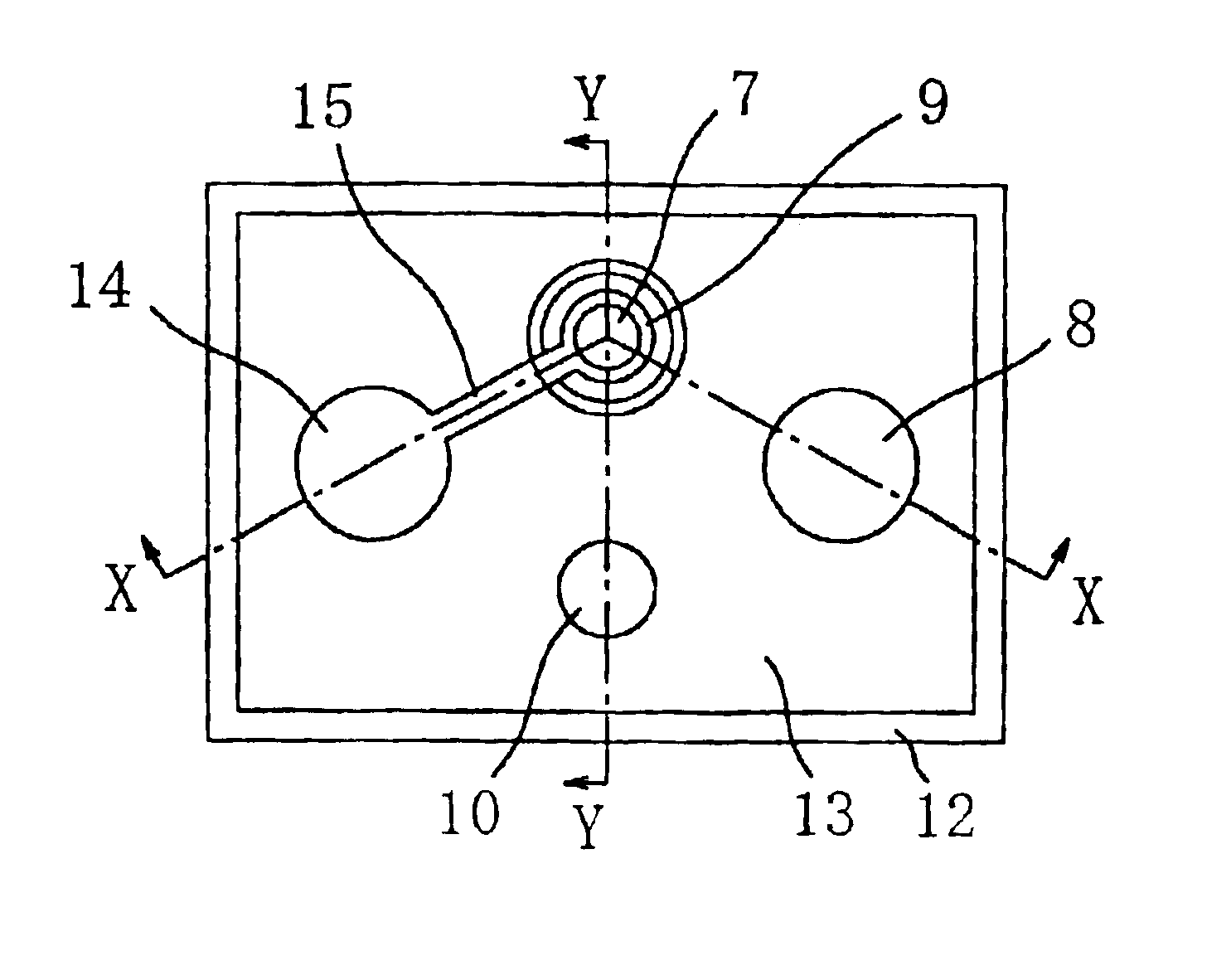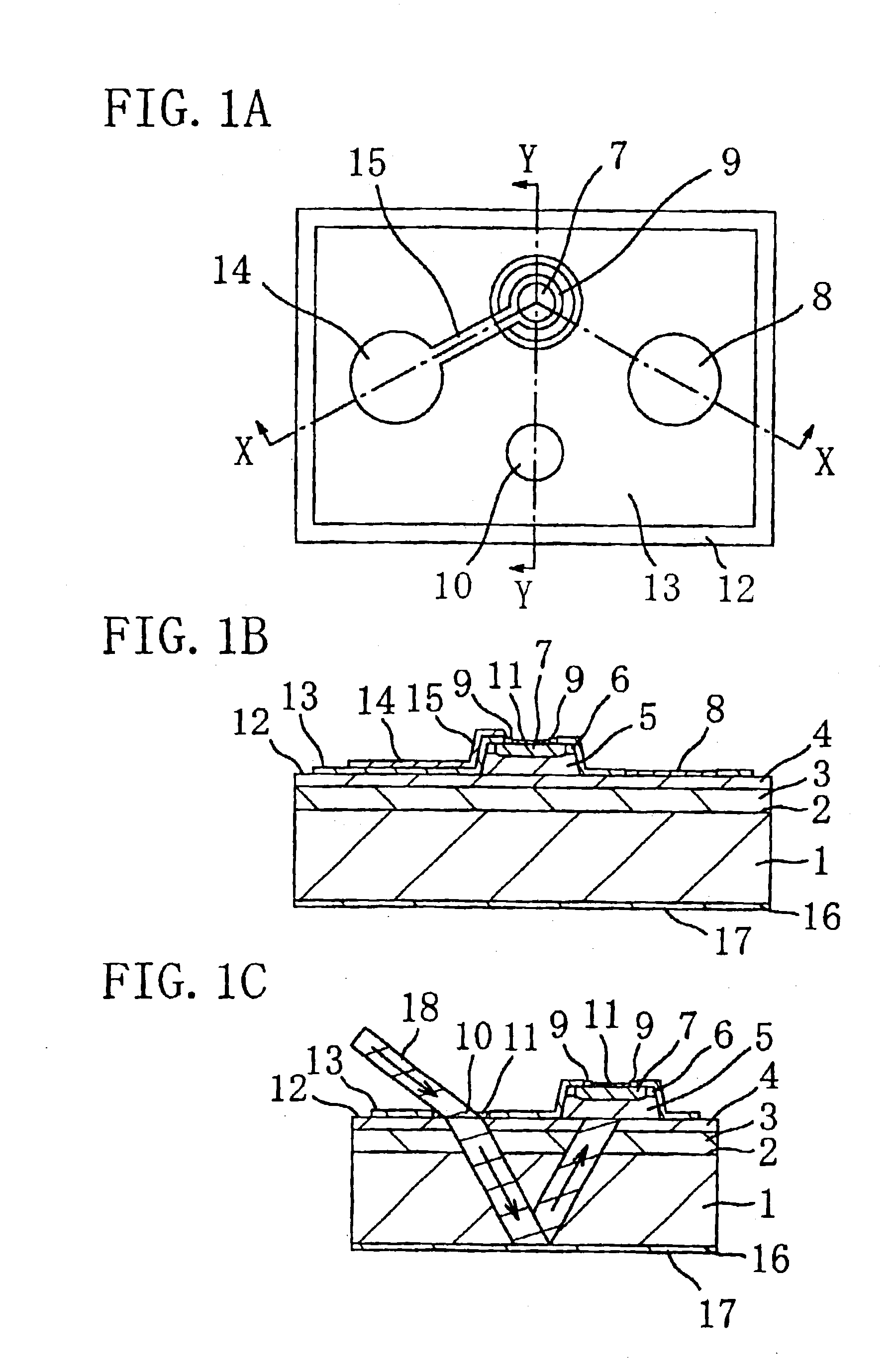Photodetector and unit mounted with photodetector
a photodetector and photodetector technology, applied in the field of photodetectors and units mounted with photodetectors, can solve the problems of difficult to diffuse impurities deeply, with good control, and fluctuations in the composition of ingaasps, and achieve easy flip-chip bonding, reduce parasitic capacitance, and high operation speed
- Summary
- Abstract
- Description
- Claims
- Application Information
AI Technical Summary
Benefits of technology
Problems solved by technology
Method used
Image
Examples
first embodiment
[0068]The photodetector according to a first embodiment of the present invention will be described with reference to FIG. 1. FIG. 1A is a plan view of the photodetector according to the first embodiment. FIG. 1B is a cross-sectional view taken along the X—X line in FIG. 1A. FIG. 1C is a cross-sectional view taken along the Y—Y line in FIG. 1A.
[0069]The photodetector of this embodiment includes a semiconductor substrate 1, a filter layer 3 formed on a first principal face 2 of the semiconductor substrate 1, and a light absorption layer 5 formed in an island on the filter layer 3. Here the absorption edge wavelength of the filter layer 3 is longer than the absorption edge wavelength of the semiconductor substrate 1 and shorter than the absorption edge wavelength of the light absorption layer 5. Further, a light incidence portion 10 is formed at a portion of the filter layer 3 where the light absorption layer 5 has not been formed. It is preferable that a carrier blocking layer (buffer...
second embodiment
[0096]The photodetector according to a second embodiment of the present invention will be described with reference to FIG. 4. FIG. 4A is a plan view of the photodetector according to the second embodiment, FIG. 4B is a cross-sectional view taken along the X—X line in FIG. 4A, and FIG. 4C is a cross-sectional view taken along the Y—Y line in FIG. 4A. FIG. 4D is a rear face view showing the shape of the spot of a sloped portion 19 when the semiconductor substrate 1 is viewed from its rear face.
[0097]As shown in FIG. 4C, the feature where the photodetector according to the second embodiment differs from the photodetector according to the first embodiment is that an indented portion with the sloped portion 19 is formed in the second principal face 16 of the semiconductor substrate 1, and a reflective film 20 is formed on the second principal face 16 of the semiconductor substrate 1 having the sloped portion 19. It should be noted that the incident light 18 is incident to the sloped port...
third embodiment
[0101]The photodetector according to a third embodiment of the present invention will be described with reference to FIG. 5. FIG. 5A is a plan view of the photodetector according to the third embodiment, FIG. 5B is a cross-sectional view taken along the X—X line in FIG. 5A, and FIG. 5C is a cross-sectional view taken along the Y—Y line in FIG. 5A.
[0102]As shown in FIG. 5C, the feature where the photodetector according to the third embodiment differs from the photodetector according to the first embodiment is that the filter layer 3 is not formed on the first principal face 2 of the semiconductor substrate 1 and instead a filter layer 21 is formed on the second principal face 16 of the semiconductor substrate 1, and the reflective film 17 is formed on the filter layer 21. Also, another feature is that the carrier blocking layer is not formed.
[0103]For the sake of simplifying the description, the same components as those of the photodetector of the first embodiment bear the same numer...
PUM
 Login to view more
Login to view more Abstract
Description
Claims
Application Information
 Login to view more
Login to view more - R&D Engineer
- R&D Manager
- IP Professional
- Industry Leading Data Capabilities
- Powerful AI technology
- Patent DNA Extraction
Browse by: Latest US Patents, China's latest patents, Technical Efficacy Thesaurus, Application Domain, Technology Topic.
© 2024 PatSnap. All rights reserved.Legal|Privacy policy|Modern Slavery Act Transparency Statement|Sitemap



